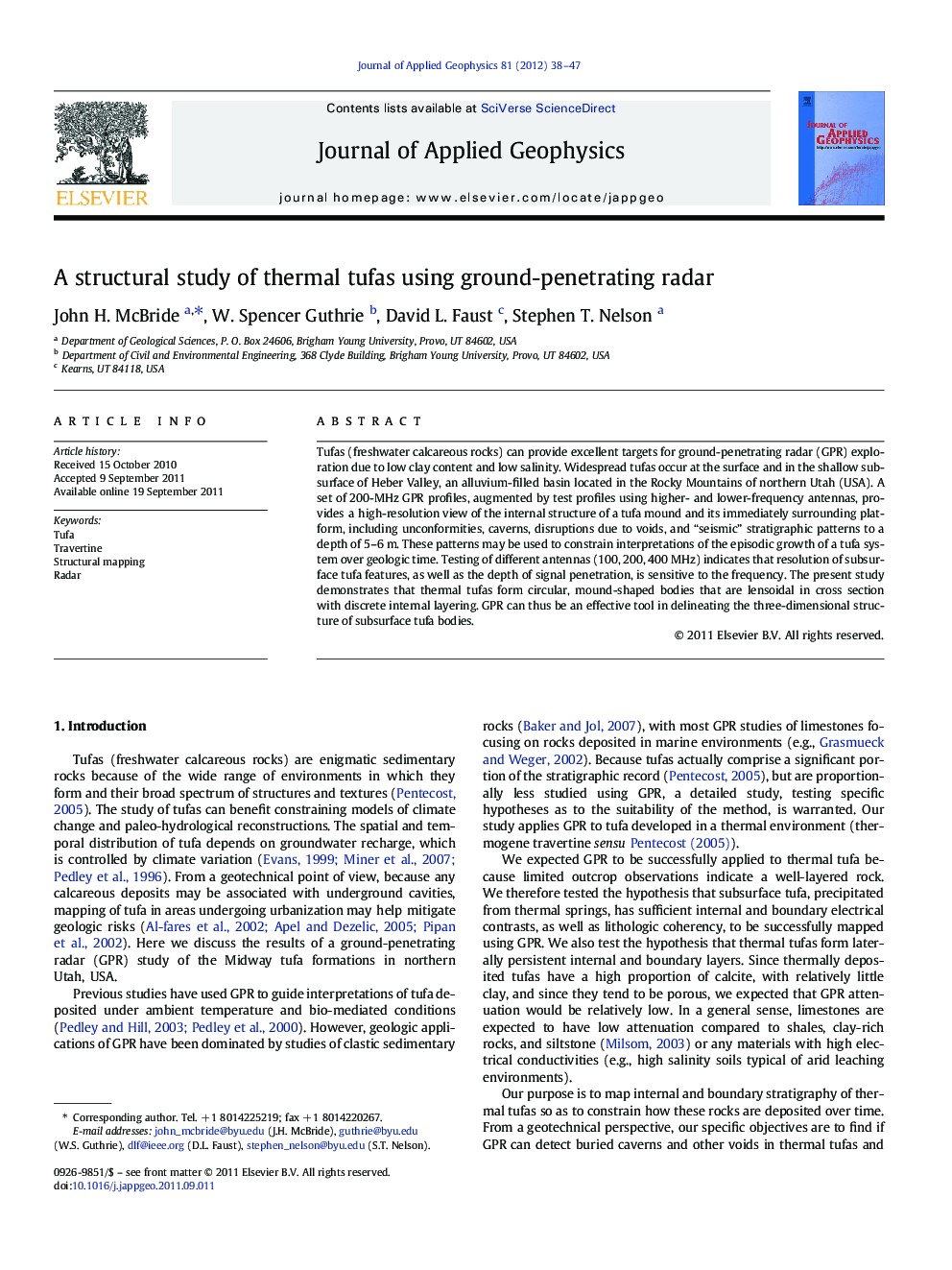| Article ID | Journal | Published Year | Pages | File Type |
|---|---|---|---|---|
| 4740427 | Journal of Applied Geophysics | 2012 | 10 Pages |
Tufas (freshwater calcareous rocks) can provide excellent targets for ground-penetrating radar (GPR) exploration due to low clay content and low salinity. Widespread tufas occur at the surface and in the shallow subsurface of Heber Valley, an alluvium-filled basin located in the Rocky Mountains of northern Utah (USA). A set of 200-MHz GPR profiles, augmented by test profiles using higher- and lower-frequency antennas, provides a high-resolution view of the internal structure of a tufa mound and its immediately surrounding platform, including unconformities, caverns, disruptions due to voids, and “seismic” stratigraphic patterns to a depth of 5–6 m. These patterns may be used to constrain interpretations of the episodic growth of a tufa system over geologic time. Testing of different antennas (100, 200, 400 MHz) indicates that resolution of subsurface tufa features, as well as the depth of signal penetration, is sensitive to the frequency. The present study demonstrates that thermal tufas form circular, mound-shaped bodies that are lensoidal in cross section with discrete internal layering. GPR can thus be an effective tool in delineating the three-dimensional structure of subsurface tufa bodies.
► GPR applied to thermal tufa can map stratigraphy and buried hazards (e.g., voids). ► The necessary dielectric contrasts arise from porosity and grain size variation. ► Thermal tufas form discrete mound-shaped bodies, lensoidal in cross section. ► GPR can easily map the boundaries of such tufa bodies in three dimensions.
